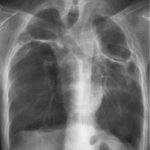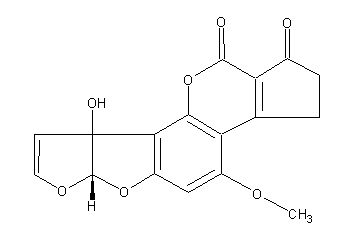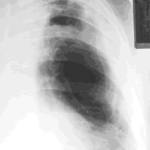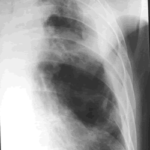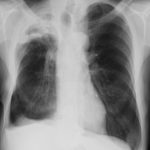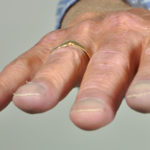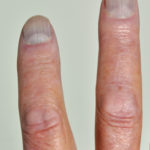Date: 26 November 2013
Secondary metabolites, structure diagram: Trivial name – aflatoxin M1
Copyright: n/a
Notes:
Species: A. flavus, A. parasiticusSystematic name: Cyclopenta[c]furo[3′,2′:4,5]furo[2,3-h][1]benzopyran-1,11-dione, 2,3,6a,9a-tetrahydro-9a-hydroxy-4-methoxy-, (6aR-cis)-Molecular formulae: C17H12O7Molecular weight: 328.28Chemical abstracts number: 6795-23-9Selected references: Nakazato, Mitsuo; Morozumi, Satoshi; Saito, Kazuo; Fujinuma, Kenji; Nishima, Taichiro; Kasai, Nobuhiko (Dep. Food Hyg. and Nutr., Tokyo Metrop. Res. Lab. Public Health, Tokyo 169, Japan). Eisei Kagaku, 37(2), 107-16 (English) 1991.Toxicity: Slightly less toxic than aflatoxin B1 with an oral LD50 for the one day-old duckling 0.46 mg/kg body-weight. Significantly less carcinogenic than aflatoxin B1.
Images library
-
Title
Legend
-
Image A
CT Scan 30/3/99
Showing extreme pleural thickening and 2 small cavities at apex of left lung.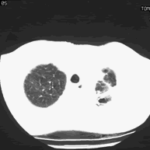
-
A 43 year old with smoking related emphysema was admitted to hospital with two separate episodes of haemoptysis. He had been in good health up to 1989, when he was diagnosed as having bilateral pulmonary tuberculosis. At that time a CT scan revealed a cavity in the left upper lobe (20.8cm2) with adjacent confluent infiltrates and pleural thickening. On bronchoscopic examination no abnormalities were noted and endobronchial biopsies did not reveal hyphae.
Over the next 4 years his condition deteriorated and a CT scan showed the left upper lobe cavity had increased to 40cm2. Itraconazole 400mg daily was prescribed. There was some clinical improvement on itraconazole but patient eventually deteriorated with breathlessness and with significant weight loss.
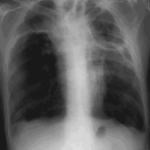 ,
, 